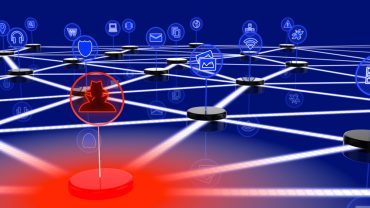
The sharing economy, built on maximizing use of assets and relying on a peer network to manage this in real-time, could take off with blockchain and IoT.
There is an inherent societal wisdom to accessing the goods and services we need from one another. In the modern age, the so-called “shared economy” represents a sort of tech-enabled farmers market, in which online cloud-based platforms offer the marketplace, a digital reputation system feigns a social connection, and some combination of sensors, legal contracts, and a broker make the system trustworthy enough.
Sharing economy darlings like Uber and Airbnb have all but entirely redefined their respective industries, yet the broader economic shift away from relying on corporations, towards really utilizing under-utilized assets and relying on one another for real-time asset sharing has yet to really take off.
See also: Practical blockchain — A Gartner Trend Report
Meanwhile, an unlikely technological advancement in shared record-keeping architecture, known widely as “blockchain” introduces new ways to accelerate real-time peer-to-peer asset sharing. Blockchain is but one type of distributed ledger technology (DLT), and can be defined as a decentralized, distributed ledger wherein financial and operational transactions are recorded across, and verified by a network of nodes rather than a single central authority.
This post outlines three ways DLT’s convergence with IoT and sensor data could accelerate the next generation of the sharing economy.
#1: Federated user authentication
Having a corporation handle the reputation, authentication, and myriad liabilities around buyer and seller interactions is essential for building consumers’ trust in participating in shared services. While some platforms may use social log-ins to deepen a user’s profile with social media data, our digital lives remain highly siloed. This siloed approach forces identity and security expertise most organizations desperately lack. User authentication is a barrier to automating a more open collaborative economic model, not only in peer-to-peer asset sharing but for organizations working across multiple public and private parties.
A federated digital identity, in which in which a user’s single authentication or unique token, is trusted across multiple IT systems or even organizations, remains a missing link to enabling sharing of assets between strangers. DLT architectures extend federated identity not only to centralize the decentralized [digital information that comprises one’s identity,] but to verify the authenticity made by any user without centralized databases.
DLT’s cryptographic roots and private-public key infrastructure also offer a way to give back control of digital identity to end users themselves. While DLT remains an early technology, the structures unlocked through decentralized identity could catalyze shared economy applications, such as:
- Enabling secure access for asset sharing, e.g. car-sharing, home or workspace-sharing, energy-sharing through electric charging stations, across multiple public and private parties,
- Enabling secure data sharing, such that end users have exclusive sharing rights and controls to submit (and potentially monetize) their data to data exchanges.
- Enabling shared loyalty programs, such that end users gain tokens or rewards spanning their engagement with multiple organizations; users could even share or trade rewards.
#2: Smart contracts for (near) real-time reconciliation
Entire industries exist today whose sole purpose is to verify transactions and validate settlement, often over the course of days or even weeks. For transactions involving numerous counterparties, asset types, documents, systems, geographies, and regulatory requirements, tremendous inefficiencies and frequent disagreements are expensive and prolong reconciliation. In the context of today’s ‘shared economy,’ this is one of the central roles of the businesses that provide sharing platforms— businesses that charge fees for users that range anywhere from 10-22%, sometimes up to 30%.
Through smart contracts, DLT can automatically handle many aspects of identity, credit, or document verification, review, transfer of funds or titles, and many other reconciliatory processes in a fraction of the time. Think of smart contracts as tiny software programs that encode logic into transaction verification. Using sensor and IoT data, such as biometrics, GPS, NFC, Bluetooth, or combinations thereof offers a way to expedite transaction verification, while smart contracts encode the logic and compliance needed to reconcile. The ability for transactions to be coordinated, not by a centralized corporation that charges a brokerage fee, but via self-executing smart contracts (performed at a much lower cost) introduces a range of opportunities to automate shared asset transaction processing, such as:
- Enabling real-time payment execution based on smart contracts and IoT. Airbnb recently hired the majority of the team from a Bitcoin-based micropayments provider, ChangeCoin, to advance their vision towards smoother guest-host transactions in which payment is received the moment the guest places the key in the door of the host’s property.
- Enabling machine-to-machine transactions (e.g. community power cells negotiating and allocating energy surpluses).
- Enabling microinsurance for shared assets (e.g. sharing high value or luxury assets means both parties may want insurance for the length and terms of that transaction).
#3: Shared architecture for collaborative interactions
Although today’s shared economy has introduced the world to the notion of user-supported marketplaces, marketplaces themselves remain siloed. Diversity of ownership (i.e. of those controlling devices, machines, and cloud infrastructure) has limited sharing and interoperability—both technically and culturally. Today there is no shared architecture to centralize, permission, and authenticate all interactions associated with a product, a property, a service, or really any other shareable asset. A sharing economy needs a shared network.
Although blockchain is but a first generation of distributed ledger technologies, it introduces the framework for such a universal ledger in which identities, transactions, and interactions could be immutably registered, access permissioned, and smart contracts encoded. When interactions are permissioned, immutable, and shared across a spectrum of service providers, it offers the potential for ecosystems to generate and move value with vastly greater efficiency and security. Early examples working towards this universal sharing layers include:
- Enabling a sharing network for energy charging, in which owners (private and public) of charging stations to share energy with each other (rather than sit unused). Germany’s Share & Charge is a leading example.
- Enabling a universal sharing network, in which blockchain or other DLT is used to enable both individuals and organizations to share, rent, or sell any object. One of the early movers in the blockchain space, a company called Slock.it and Origin are two entities working on a blockchain-based infrastructure and protocols for booking, hand-off, event logging, and P2P payment across individuals and organizations to share, rent, or sell any connected object or offer a service.
Distributed ledger technologies are in the embryonic days of their development, but the genie is out of the bottle. The architectural paradigm born of the Bitcoin blockchain has and will continue to evolve, but its core components— distributed consensus, private-public key infrastructure, smart contracts, and beyond—won’t just impact traditional economic structures, but shared ones too.




























